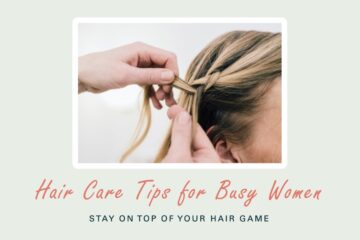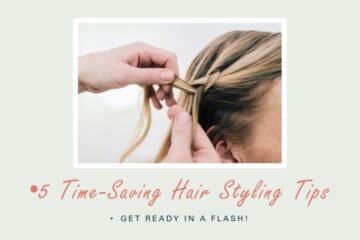Like a wilted flower in need of nourishment, your damaged hair longs for revitalization. It’s time to discover the secrets of repairing your locks with the right products.
From understanding the root causes of hair damage to selecting the perfect shampoo and conditioner, this discussion will unveil the essential steps to restore your hair’s health and radiance.
But that’s not all – we’ll also delve into the realm of hair masks, leave-in treatments, and professional repair options, leaving you with a tantalizing promise of rejuvenated tresses.
So, let’s embark on this journey together, and unlock the path to beautiful, repaired hair.
Identify Your Hair’s Needs
To properly address the damage in your hair, it’s crucial to identify its specific needs and understand the factors contributing to its current condition. Assess your hair’s condition, such as dryness, brittleness, or frizziness, to understand what it requires for repair.
Look for signs of damage, like split ends, lack of shine, or difficulty in managing your hair, to identify the areas that need attention. Consider factors like heat styling, chemical treatments, or environmental exposure that may have contributed to your hair’s damage.
Understanding the impact of coloring, heated stylers, weather conditions, and other external factors on your hair’s health is essential. Take note of any changes in your hair’s texture, elasticity, or overall appearance to pinpoint the areas requiring repair.
Choose the Right Shampoo
Now that you have assessed your hair’s specific needs and identified the areas that require attention, it’s time to choose the right shampoo to repair and restore your damaged hair. Selecting the appropriate shampoo is crucial in your journey towards healthier and stronger hair.
Here are three key factors to consider when choosing the right shampoo:
- Look for sulfate-free shampoos: Sulfates can strip your hair of its natural oils, leading to further damage. Opt for sulfate-free shampoos to minimize this stripping effect and protect your hair from additional harm.
- Consider moisturizing ingredients: Damaged hair often lacks moisture, so it’s important to choose a shampoo that includes hydrating ingredients. Look for shampoos containing shea butter, coconut oil, or argan oil. These ingredients will help nourish and hydrate your hair, restoring its natural moisture balance.
- Target your specific concern: Different shampoos address different hair concerns. Whether you’re looking to protect your hair color, provide deep hydration, or strengthen weakened strands, choose a shampoo that specifically targets your hair’s needs. This targeted approach will ensure that you’re addressing the specific issues causing damage to your hair.
Select an Effective Conditioner
Regularly using an effective conditioner is essential for repairing and restoring damaged hair to its optimal health. When selecting a conditioner, look for products that contain moisturizing ingredients like shea butter, coconut oil, and avocado oil. These ingredients help to hydrate and strengthen damaged hair, providing the necessary moisture and nutrients it needs to recover.
Consider using a bond repair conditioner, such as Olaplex No.5 Bond Maintenance, which is specifically designed to repair and protect damaged hair. It works by strengthening the bonds in the hair shaft, reducing breakage and improving overall hair health. Additionally, it’s important to choose a conditioner that’s suitable for your specific hair type and needs. Whether your hair requires repair, hydration, or color protection, there are formulas available to address those concerns.
Regular use of a high-quality conditioner will help replenish moisture and improve the overall health of damaged hair. For extra hydration and repair, consider incorporating deep conditioning treatments or leave-in conditioners into your hair care routine. These products provide additional nourishment and moisture, helping to restore your hair’s vitality.
Incorporate a Weekly Hair Mask
When it comes to repairing and restoring damaged hair, incorporating a weekly hair mask is a crucial step in your hair care routine. Hair masks provide deep nourishment and repair to your hair, helping to restore its health and vitality.
Here are three important things to consider when incorporating a weekly hair mask:
- Look for moisturizing formulas: When choosing a hair mask, opt for formulas that contain natural ingredients like shea butter, coconut oil, and avocado oil. These ingredients provide intense hydration to your hair, helping to soften and smooth damaged strands.
- Consider rice water-based masks for curly or coily hair: If you have curly or coily hair, using a hair mask that’s rice water-based can be beneficial. Rice water is rich in amino acids and vitamins, which help to strengthen and repair damaged strands, leaving your hair healthier and more resilient.
- Apply on damp hair and leave it on overnight: For maximum effectiveness, apply the hair mask on damp hair. This allows the product to penetrate deeply into the hair shaft, providing optimal nourishment and repair. Leave the mask on overnight for better results. Be sure to protect your pillow with a towel or shower cap to avoid any mess.
Incorporating a weekly hair mask into your hair care routine can make a significant difference in repairing and restoring damaged hair. Choose the right mask for your hair type and follow the instructions for best results. You’ll soon notice healthier, shinier, and more manageable hair.
Use a Leave-In Treatment
For continuous protection and nourishment, incorporating a leave-in treatment into your hair care routine is essential. Leave-in treatments are designed to provide ongoing benefits throughout the day, ensuring that your hair remains healthy and protected. When choosing a leave-in treatment, it’s important to match it to your specific hair type for optimal results. Different formulas cater to different needs, whether you have dry, damaged, or color-treated hair.
One of the advantages of using a leave-in treatment is that some options offer UV protection. This is particularly beneficial if you have colored hair, as UV rays can cause color fading and damage. By applying a leave-in treatment with UV protection, you can shield your hair from these harmful rays, preserving the vibrancy and integrity of your color.
Leave-in treatments also help manage frizz and repair damaged hair. They contain nourishing ingredients that penetrate the hair shaft, replenishing moisture and nutrients. This helps to reduce frizz, improve hair texture, and restore elasticity. Additionally, leave-in treatments can provide heat protection, safeguarding your hair from the damaging effects of styling tools.
If your hair is severely damaged and requires intensive repair, you might consider professional salon treatments. These treatments often contain higher concentrations of active ingredients, providing a more potent solution for your hair’s needs. A trained stylist can assess the condition of your hair and recommend the most suitable salon treatment to restore its health and vitality.
Incorporating a leave-in treatment into your hair care routine is a simple yet effective way to repair and protect damaged hair. By choosing the right treatment for your hair type and needs, you can nourish your hair from within, manage frizz, and maintain vibrant, healthy locks.
Protect Your Hair With Heat Styling Products
To protect and repair damaged hair caused by heat styling, it’s crucial to incorporate heat styling products into your hair care routine. Heat from straighteners, curlers, and dryers can compromise the health of your hair, leading to dry and weak strands.
Here are three essential steps to protect your hair from heat damage:
- Use a heat protectant: Prior to using any heat styling tools, apply a heat protectant spray or serum to your hair. These products create a barrier between your hair and the heat, reducing the damage caused by high temperatures. Look for heat protectants that contain ingredients like silicones or keratin, as they provide added protection and nourishment.
- Adjust your styling tool’s temperature: Most styling tools come with adjustable temperature settings. Lowering the heat setting can significantly reduce the damage caused to your hair. Start with the lowest temperature necessary to achieve your desired style, and avoid using maximum heat unless absolutely necessary.
- Take breaks from heat styling: Giving your hair regular breaks from heat styling can do wonders for its health. Opt for air-drying whenever possible and limit the use of heated stylers to a few times a week. This will allow your hair to recover and restore its natural moisture and strength.
Consider Professional Hair Repair Treatments
To further repair the damage caused by heat styling, it’s essential to consider professional hair repair treatments. These treatments offer immediate and intensive repair for severely damaged hair. They contain high concentrations of active ingredients that can transform and repair your hair in no time.
In-salon treatments are particularly beneficial for addressing hair damage caused by frequent color transformations and other chemical services. They can help prevent bond destruction and future damage, especially for those who frequently change their hair color.
Professional hair treatments provide a higher level of expertise and knowledge, ensuring that your hair is in safe hands. The professionals will assess the condition of your hair and recommend the most suitable treatment to address your specific needs. These treatments can effectively repair severely damaged hair, restoring its health, strength, and shine.
If your hair is severely damaged, it’s crucial to seek immediate professional treatments. These treatments can address the damage effectively and prevent further deterioration. By investing in professional hair repair treatments, you’re taking an active step towards restoring the health and vitality of your hair.
Conclusion
In conclusion, repairing damaged hair is possible with the right products and care routine. By identifying your hair’s needs, choosing the right shampoo and conditioner, incorporating a weekly hair mask and leave-in treatment, and protecting your hair with heat styling products, you can restore and strengthen your damaged hair.
Did you know that using high-quality shampoo and conditioner can reduce hair breakage by up to 50%?
Take these steps to enjoy healthier and revitalized hair.


